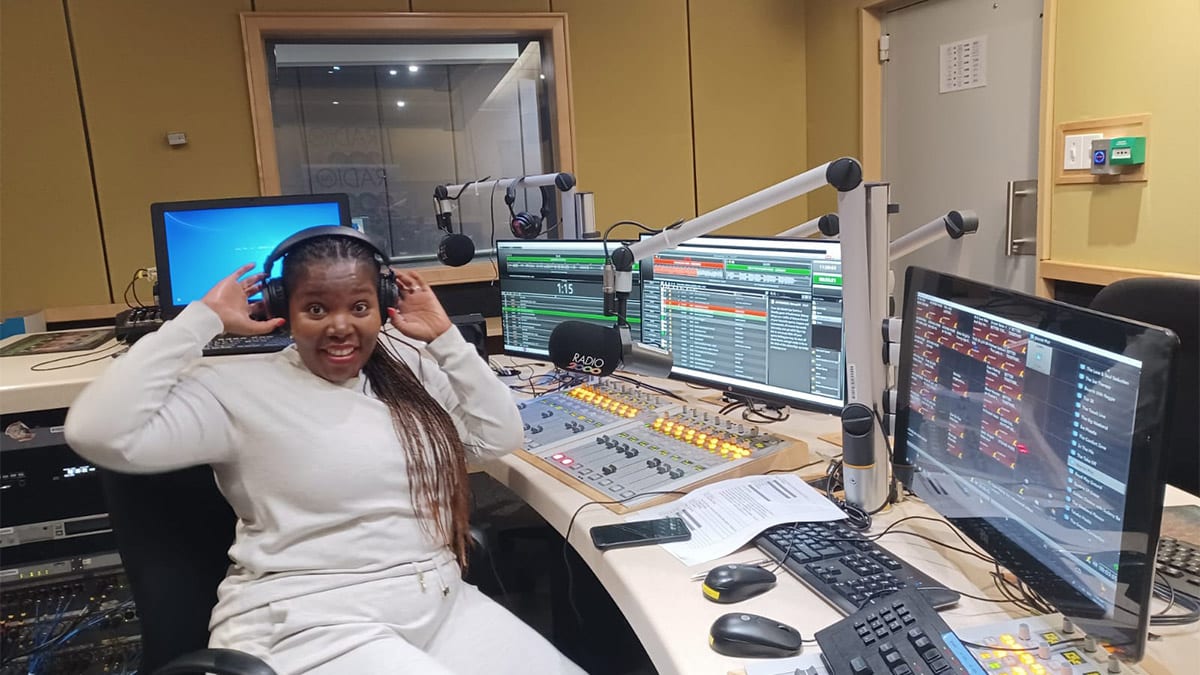JOHANNESBURG — South Africa’s public broadcaster, SABC, which celebrated 85 years of broadcasting last year, is upgrading studios across its 19 radio stations as part of a major transition to digital.
Nada Wotshela, group executive for SABC Radio, explained that the group has two radio portfolios. “Our public commercial services exist to deliver financial returns to SABC and subsidize the public broadcasting portfolio,” she said.
“Our public service mandate is to deliver public value such as educational programs to South African citizens, in all 11 official languages. There are three commercial radio stations: Metro FM, 5FM and Good Hope FM,” she added.
“Metro FM is the largest commercial radio station in Southern Africa with 5.4 million listeners. The station broadcasts in all key metropoles or big cities in the country, making it an urban radio station. 5FM is a youth radio station broadcasting nationally with just over 1 million listeners. Good Hope FM is a Cape Town-based radio station with 800,000 listeners. Essentially, PCS stations are largely musical, with Metro FM and Good Hope FM, following an adult contemporary format, and 5FM a hit radio format.”
Public-service mandate
The rest of the radio stations carry a public-service mandate. “There are 10 South African indigenous-language radio stations, one Afrikaans station and two English radio stations, all carrying a full-spectrum license,” Wotshela said. “There’s an international radio station called Channel Africa — it broadcasts to the African continent in six languages, including French, Portuguese and Swahili. The station’s mandate is to promote South Africa’s foreign policy to the continent. Overall, the SABC commands 75% of the country’s radio listening audience share, so it’s the home of the biggest and most loved radio stations in South Africa.”
Wotshela noted the wide range of output from SABC’s radio stations. “We have a potpourri of very popular shows and presenters. Culture and religion are very big in South African radio, and so it is easy to find a gospel music program carrying more listeners than a breakfast show,” she explained.
“For example, Thuso Motaung is the most popular radio host on Lesedi FM. He presents a lunchtime show covering religious, cultural and moral regeneration issues; the program attracts almost 1 million listeners per week. Mo Flava on Metro FM’s breakfast show is very popular with urban youth as he represents black excellence and everything they aspire to be.”
Out with the old
SABC is in the process of refurbishing all its studios. The work includes upgrading Pro Tools systems in the drama studios, changing contribution lines from ATM to IP codecs and installing the latest dira! on-air system from CGI. “We chose dira! after our technology department explored a few international systems,” said Wotshela. “A group of experts in the field visited several countries and broadcasters of a similar size and mandate to SABC, to look at the best systems they are using.”
Wotshela outlined some of the benefits of the new dira! system. “The old playout system that we’re phasing out is giving serious problems, like freezing or losing material in the middle of a broadcast. But that will soon be a thing of the past. We’ll get accurate music reports that are generated directly from the playout system, as well as the accurate and prompt playing of adverts,” she said.
Because of the increased penetration of smartphones and internet usage, and lower data costs, more and more South Africans are choosing digital platforms to interact with their radio stations.
Wotshela described how the SABC is adapting. “We ensure our on-air personalities stay on top of their game by installing equipment that enables them to integrate content from social media and other digital platforms in their delivery. Studios are equipped with webcams to deliver visual radio moments; tablets and touch screens enable quick reactions to breaking stories or listeners’ comments.
Diversity of brands and voices
“Our studios host a wide range of equipment from different brands,” said Wotshela. “At the SABC, we have integrated dira! to the Studer, Axia and DHD mixing consoles. Our studios have AKG, Neumann, Shure and Electro-Voice microphones, with Sennheiser, beyerdynamic and AKG headphones.”
What does the future hold next for SABC? “We expect a diversity of voices on our platforms as it’s becoming easier to broadcast remotely with the introduction of new technologies,” Wotshela said.
“With the country’s digital migration, we are also looking forward to more pop-up channels as we diversify our offering in the new era of digital audio broadcasting. And then there’s the introduction of visual radio on OTT platforms — the possibilities are endless.”

